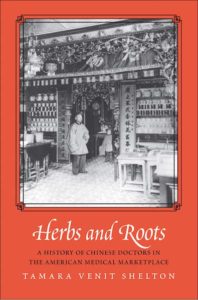 It was in Guangdong province – the city of Zhuhai to be exact – that after three weeks of traveling from one side of China, nearly to the other, and back again, that I finally succumbed to an illness that all-but-incapacitated me. As I was struggling to keep anything down – or in – and playing every trick in my travel medicine kit in hopes of stabilizing myself sufficiently for the trip to Shanghai and then the long flight back to Seattle, my Chinese colleagues became increasingly concerned about me and in earnest efforts to help suggested that I allow them to take me to a traditional medicine practitioner. As a westerner with no understanding whatsoever of traditional Chinese medicine, I was – somewhat to my embarrassment now – moderately horrified.
It was in Guangdong province – the city of Zhuhai to be exact – that after three weeks of traveling from one side of China, nearly to the other, and back again, that I finally succumbed to an illness that all-but-incapacitated me. As I was struggling to keep anything down – or in – and playing every trick in my travel medicine kit in hopes of stabilizing myself sufficiently for the trip to Shanghai and then the long flight back to Seattle, my Chinese colleagues became increasingly concerned about me and in earnest efforts to help suggested that I allow them to take me to a traditional medicine practitioner. As a westerner with no understanding whatsoever of traditional Chinese medicine, I was – somewhat to my embarrassment now – moderately horrified.
Like many of similar backgrounds to myself, my unfamiliarity with the rich and lengthy history of traditional Chinese medicine causes me to view it with skepticism. Yet for billions of people over many centuries it has provided the solution to a host of maladies. It has also, as Tamara Venit Shelton explains in her forthcoming book Herbs and Roots; A History of Chinese Doctors in the American Medical Marketplace, sometimes been its own worst enemy in embracing stereotypes when practitioners have tried to market it to those skeptical of modern western medicine.
I look forward to discovering more about this subject from Prof. Shelton’s book. I am also very curious to learn if she includes in it any commentary on some of the challenges to wildlife conservation that some of its practices have caused in recent years.
